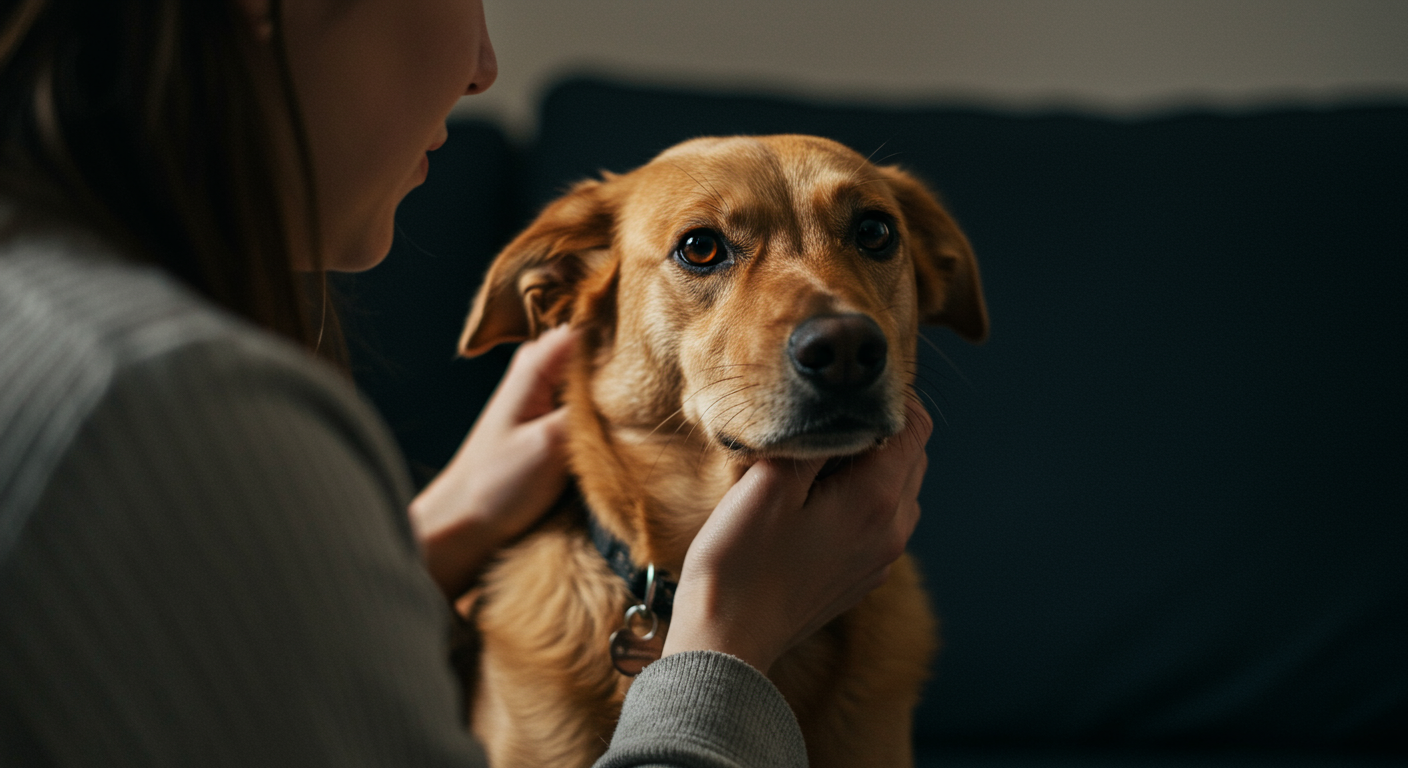Bringing a new dog into your life is an incredibly rewarding experience. However, one of the biggest challenges new pet parents face is understanding what their furry friend is trying to communicate. Dogs communicate through a complex system of body language, and learning to read these signals is essential for building a strong bond, ensuring their well-being, and addressing potential behavioral issues. This guide is designed specifically for new dog owners, helping you decipher the fascinating world of dog body language.

Why Understanding Dog Body Language is Crucial for Your New Pet
Understanding your dog's body language is the foundation of effective communication and a happy relationship. It allows you to:
- Anticipate Needs: Recognize signs of hunger, thirst, or the need to go outside.
- Prevent Problems: Identify early signs of stress, anxiety, or aggression, allowing you to intervene before a situation escalates.
- Strengthen Your Bond: Show your dog that you understand them, fostering trust and a deeper connection.
- Enhance Training: Better understand what motivates your dog, making training more effective.
Essential First Steps for Understanding Your Dog
- Observe the Whole Dog: Pay attention to the ears, eyes, mouth, tail, and overall posture. A dog's message is usually a combination of several signals.
- Context Matters: Consider the environment and the situation. A wagging tail can mean happiness, but also excitement or even anxiety, depending on the context.
- Learn the Basics: Familiarize yourself with common signals, such as a relaxed posture, a playful bow, or a tucked tail.
- Be Patient: It takes time to become fluent in dog body language. Keep observing and learning, and trust your instincts.
Common Challenges & How to Overcome Them
1. Interpreting Tail Wags:
- Challenge: Not all tail wags indicate happiness. A fast, stiff wag can signal excitement or even anxiety. A slow, sweeping wag often indicates a relaxed state. A tail tucked between the legs means fear or submission.
- Solution: Observe the tail's position, speed, and the dog's overall posture. A relaxed dog will have a neutral tail position or a gentle wag. A fearful dog will have a tucked tail, a crouched body, and possibly wide eyes.
2. Decoding Ear Positions:
- Challenge: Ears can tell you if a dog is alert, anxious, or relaxed. Forward-facing ears suggest interest or alertness. Flattened ears often indicate fear or submission. Relaxed ears suggest a calm state.
- Solution: Combine ear position with other signals. Pricked ears combined with a forward stance can mean curiosity. Flattened ears with a tucked tail and a lowered body indicate fear.
3. Recognizing Signs of Stress and Anxiety:
- Challenge: Dogs experience anxiety and stress, which can manifest in various ways.
- Solution: Watch for these signs: yawning (when not tired), lip licking, panting (when not hot), a whale eye (showing the whites of the eyes), a tucked tail, dilated pupils, shaking, or a tense body posture. If you notice these signs, remove your dog from the stressful situation or consult with a veterinarian or a certified dog behaviorist.
Tips for Success
- Positive Reinforcement Training: Use positive reinforcement techniques, such as treats and praise, to reward desired behaviors. A PetSafe Training Clicker can be a helpful tool for this.
- Provide a Safe Space: Create a comfortable and secure space where your dog can relax and feel safe.
- Establish a Routine: Dogs thrive on routine. Consistent feeding times, walks, and playtime help reduce anxiety and create a sense of security.
- Socialization: Expose your dog to different people, environments, and other animals in a controlled and positive manner to build confidence.
Building a Strong Bond with Your Dog
- Spend Quality Time: Dedicate time each day for interaction, play, and training.
- Engage in Activities Your Dog Enjoys: Whether it's a walk in the park, a game of fetch, or simply cuddling on the couch, make sure you're doing things your dog loves.
- Be Patient: Building a strong bond takes time and consistency. Don't get discouraged if it doesn't happen overnight.
Recommended Products for New Owners
Consider these items to help your dog feel safe and secure:
- Comfortable Bed: Provides a safe and familiar space.
- High-Quality Food and Water Bowls: Choose durable and easy-to-clean bowls.
- Durable Toys: Provide enrichment and prevent boredom. Consider a Kong Toy for chewing and mental stimulation.
- Anxiety Vest: A Thundershirt can help some dogs with anxiety.
Quick Troubleshooting Guide
| Symptom | Possible Cause | Solution |
|---|---|---|
| Tucked Tail | Fear, anxiety, submission | Remove the dog from the stressful situation; create a safe space; consult with a vet or behaviorist if needed. |
| Excessive Panting | Heat, stress, anxiety | Move to a cooler environment; provide water; identify and address the source of stress. |
| Wide Eyes/Whale Eye | Fear, anxiety | Remove the dog from the situation; speak in a calm voice; provide a safe space. |
| Lip Licking | Stress, anxiety | Identify the stressor and remove the dog; observe for other signs of anxiety. |
| Aggression (growling, snapping) | Fear, resource guarding, territoriality | Consult with a certified dog behaviorist or a veterinarian. Never punish growling, as it is a warning sign. |
| Excessive Barking | Boredom, anxiety, territoriality | Address the underlying cause; provide more exercise and mental stimulation; consider training classes. |
| Destructive Chewing | Boredom, anxiety, teething (in puppies) | Provide appropriate chew toys; ensure adequate exercise and mental stimulation; puppy-proof your home; consider crate training. |